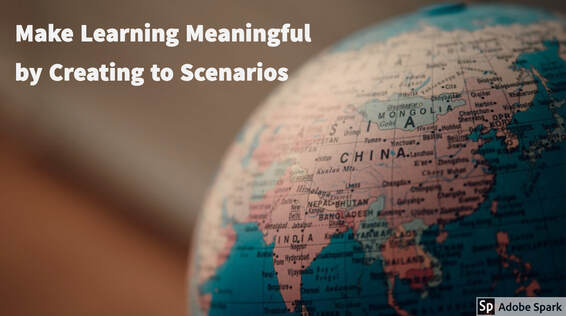|
Student creation is about more than just creating to create. You should want to create for a purpose. You should want to create for understanding and meaning. You should want to create to make the world a better place, and it all starts by building a scenario for the creation. Scenarios should always be your starting place.
What do I mean by that? I see student projects all the time that are “just create something about the topic.” That topic could be anything, but what the teacher is going to get is always the same: bad power points and bad videos. What if you actually made them create for an audience? What if you made them solve a real-world problem? You could get more than just bad tech tools with regurgitated information. To me, this takes me back to my days in the Social Studies classroom. In Social Studies, it’s so easy to fall into the trap of just having kids do a presentation to regurgitate information You have seen them a million times. They tend to have bad backgrounds, arguably plagiarized text, and images that just look weird. I thought there had to be more, and what I came to is that there had to be a scenario to create to. Instead of just giving them a topic, I gave them an audience. I put them in the history. They had to critically think like the people they were studying and like they were there. Does this sound hard? Well, it isn’t. There are thousands of scenarios you could use in any topic, but I found one that was always a good starting place if I got stuck: The United Nations. Think about it, they have a hand in everything. They work with plenty of data to tie math in. They are worried about the planet which ties in Science, and they are involved in politics which ties in Social Studies. With ELA, you can adapt grammar and writing projects to almost anything. It means you can have all four CORE subjects covered in one audience. The UN has even made it easier. They have published a set of 17 goals that they have for the planet by 2030. These are a great starting place! It sums up the world's problems beautifully and gives you a great place for kids to start solving them. There is also a massive teaching community around them, so you don’t even have to create all of the activities yourself! These can even be used for coding scenarios, and Tynker has done just that. Check out the Hour of Code projects based on the SDG's at https://www.tynker.com/hour-of-code/
1 Comment
Leave a Reply. |
Archives
January 2023
Categories |


 RSS Feed
RSS Feed
